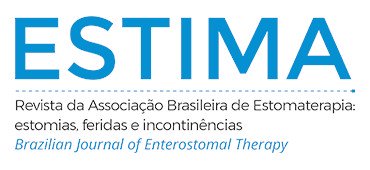USE OF DIALKYL CARBAMOYL CHLORIDE IN THE PREVENTION AND TREATMENT OF BIOFILM IN WOUNDS
Abstract
Objectives: The aim was to identify the benefits of using Dialkyl Carbamoyl Chloride for the treatment of biofilms in wounds. Methods: This is an integrative literature review that aimed to answer the guiding question: “What are the benefits of using Dialkyl Carbamoyl Chloride in the healing of skin lesions?”. The article selection stages resulted in 13 articles included. Results: The selected articles were grouped into two groups, namely: prevention and treatment of infection in wounds and prevention of surgical site infection, with nine productions in the first group and four in the second. Studies have shown that Dialkyl Carbamoyl Chloride attenuates colonization symptoms, such as odor, pain complaints and oozing, in addition to aiding in the prophylactic management of wound biofilm. Evidence indicates that dressings with Dialkyl Carbamoyl Chloride have no adverse effects, making them viable and safe options for chronic, acute and, mainly, infected injuries. Conclusion: It was identified that Dialkyl Carbamoyl Chloride was able to promote beneficial actions in the treatment of wounds, especially those of greater complexity. The proper choice of dressings and coverings can contribute to the rational use of existing technologies and antimicrobials, culminating in cost reduction and promotion of quality of life for individuals with chronic wounds.
Downloads
Metrics
References
Malone M, Bjarnsholt T, McBain AJ, James GA, Stoodley P, Leaper D et al. The prevalence of biofilms in chronic wounds: a systematic review and meta-analysis of published data. J Wound Care. 2017;26(1):20–5. https://doi.org/10.12968/jowc.2017.26.1.20
Murphy C, Atkin L, Swanson T, Tachi M, Tan YK, Vega M et al. Consensus Document. Abordar feridas de difícil cicatrização com uma estratégia de intervenção precoce antibiofilme: higienização da ferida. J Wound Care 2020;29(Suppl3b):s1-s28. Disponível em: https://www.woundhygiene.com/media/bs3bxuod/portugal_jwc_convatec_wound-hygiene-28pp_14-feb_ca-por.pdf
Jones CM, Rothermel AT, Mackay DR. Evidence−Based Medicine: Wound Management. Plast Reconstr Surg. 2017;140(1):201e-216e. https://doi.org/10.1097/PRS.0000000000003486
Viviana SGC, Thum M, Aline OR, Beloto Silva O, Franco Coelho M, Medeiros da Silva Queiroz W et al. Analysis of “1st Brazilian Recommendation for Biofilm Management in Chronic and Complex Wounds.” ESTIMA, Braz J Enterostomal Ther. 2019;17:e1819. https://doi.org/https://doi.org/10.30886/estima.v17.783_IN
Totty JP, Hitchman LH, Cai PL, Harwood AE, Wallace T, Carradice D et al. A pilot feasibility randomised clinical trial comparing dialkylcarbamoylchloride-coated dressings versus standard care for the primary prevention of surgical site infection. Int Wound J. 2019;16(4):883–90. https://doi.org/10.1111/iwj.13113
Botelho LLR, Cunha CC de A, Macedo M. O Método Da Revisão Integrativa Nos Estudos Organizacionais. Gestão e Sociedade. 2011;5(11):121−136. https://doi.org/10.21171/ges.v5i11.1220
Galvão TF, Pereira MG. Revisões sistemáticas da literatura: passos para sua elaboração. Epidemiol e Servi Saúde. 2014;23(1):183–4. http://doi.org/10.5123/S1679-49742014000100018
Pinto AM, Cerqueira MA, Bañobre-Lópes M, Pastrana LM, Sillankorva S. Bacteriophages for Chronic Wound Treatment: fromTraditional to Novel Delivery Systems. Viruses. 2020;12(2):235. https://doi.org/10.3390/v12020235
Powers JG, Higham C, Broussard K, Phillips TJ. Wound healing and treating wounds: Chronic wound care and management. J Am Acad Dermatol. 2016;74(4):607-25. https://doi.org/10.1016/j.jaad.2015.08.070
Bowler PG. Antibiotic resistance and biofilm tolerance: a combined threat in the treatment of chronic infections. J Wound Care. 2018;27(5):273–7. https://doi.org/10.12968/jowc.2018.27.5.273
Pieper B, Sobeck J, Kaljee L, Templin TN. A Descriptive Study Using an Intercept Survey: Knowledge, Attitudes, Beliefs, and Behaviors About Systemic Antibiotic Use in Adults Who Reported a Wound Within the Previous Year. J Wound Ostomy Continence Nurs. 2020;47(1):20–5. https://doi.org/10.1097/WON.0000000000000612
Meuleneire F. Infection management: The use of DACC-coated dressings in the management of wound infection. Br J Nurs. 2012;21(Sup2):4–7. https://doi.org/10.12968/bjon.2012.21.Sup2.4
Chadwick P, Ousey K. Bacterial-binding dressings in the management of wound healing and infection prevention: a narrative review. J Wound Care. 2019;28(6):370–82. https://doi.org/10.12968/jowc.2019.28.6.370
Romain B, Mielcarek M, Delhorme JB, Meyer N, Brigand C, Rohr S et al. Dialkylcarbamoyl chloride-coated versus alginate dressings after pilonidal sinus excision: a randomized clinical trial (SORKYSA study). BJS open. 2020;4(2):225–31. https://doi.org/10.1002/bjs5.50259
Boyar V. Efficacy of dialkylcarbamoylchloride-coated dressing in management of colonized or infected neonatal and pediatric wounds. J Wound Ostomy Continence Nurs. 2016;43(5):547–50. https://doi.org/10.1097/WON.0000000000000266
Biter LU, Beck GMN, Mannaerts GHH, Stok MM, Ham AC, Grotenhuis BA. The use of negative-pressure wound therapy in pilonidal sinus disease: a randomized controlled trial comparing negative-pressure wound therapy versus standard open wound care after surgical excision. Dis Colon Rectum. 2014;57(12):1406–11. https://doi.org/10.1097/DCR.0000000000000240
Bua N, Smith GE, Totty JP, Pan D, Wallace T, Carradice D et al. Dialkylcarbamoyl Chloride Dressings in the Prevention of Surgical Site Infections after Nonimplant Vascular Surgery. Ann Vasc Surg. 2017;44:387–92. https://doi.org/10.1016/j.avsg.2017.03.198
Dwiyana RF, Gondokaryono SP, Rahardja JI, Diana IA, Yogya Y, Gunawan H. Clinical efficacy of dialkylcarbamoylchloride-coated cotton acetate dressing versus combination of normal saline dressing and 2% mupirocin ointment in infected wounds of epidermolysis bullosa. Dermatol Ther. 2019;32(5):e13047. https://doi.org/10.1111/dth.13047
Denyer J. Infection management: Antimicrobial management for children with epidermolysis bullosa. Br J Nurs. 2012;21(Sup2):8–10. https://doi.org/10.12968/bjon.2012.21.Sup2.8
Bruce Z. Using Cutimed® Sorbact® hydroactive on chronic infected wounds. Wounds UK. 2012;8(1):119–29. Disponível em: https://www.researchgate.net/publication/286986985_Using_CutimedR_SorbactR_hydroactive_on_chronic_infected_wounds
Lee JW, Park SH, Suh IS, Jeong HS. A comparison between DACC with chlorhexidine acetate-soaked paraffin gauze and foam dressing for skin graft donor sites. J Wound Care. 2018;27(1):28–35. https://doi.org/10.12968/jowc.2018.27.1.28
Downloads
Published
How to Cite
Issue
Section
License
Copyright (c) 2021 Paula de Souza Silva Freitas, Lucas Dalvi Armond Rezende, Kelly Eduarda de Jesus Silva, Bruno Henrique Fiorin, Ramon Araújo dos Santos, Aline Oliveira Ramalho

This work is licensed under a Creative Commons Attribution 4.0 International License.

























